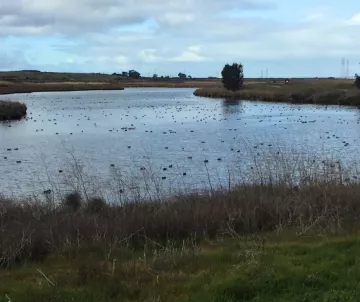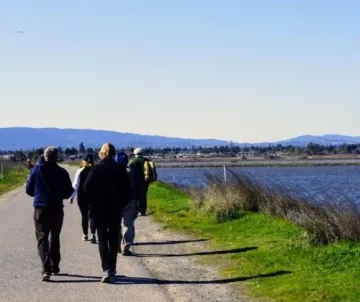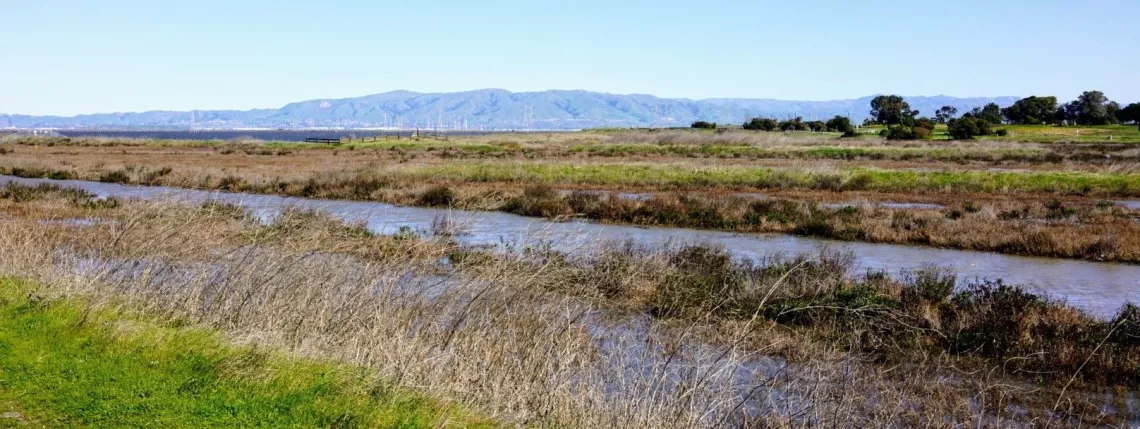
The origins of Shoreline Park p date back to 1968, when the city of Mountain View started planning the park. It would be another 15 years (1983) until the 750 acres of park would officially open to the public. For the first 13 years the "park" was used as a landfill, taking garbage from San Francisco and other local cities. In addition to raising the level of the land by about 15 feet to reduce floods, the landfill also provided an additional source of revenue to help pay for the park maintenance: from 1978 to 1993, a project between the City of Mountain View and PG&E extracted methane from the park and distributed it to the City. Shoreline Lake was created during the early years of the park as a recreation area.
The shallow areas of the bay adjacent to the park (to the north) are former salt ponds, and the the

object of intense works of habitat restoration. The westernmost pond (Charleston Slough) was the first one to revert back to government control. In the mid-1970's, Leslie Salt, which had been producing salt in the SF Bay since the early 1900s, replaced the culvert carrying bay water to the Charleston Slough with a smaller one, and the reduced water flow caused a loss of marsh area surrounding the pond. The San Francisco Bay and Conservation Commission found out about the change and ordered Leslie to undo the change. Leslie then donated the slough to the City of Mountain View, under the condition that the city did the restoration work. The 2 other salt ponds immediately to the east (right), known as A1 and A2W were acquired in 2003 as part of the purchase of 15,100 acres from from Cargill (which acquired Leslie Salt in 1978) by the Fish and Wildlife Service and the California Department of Fish and Game completed in 2003. These two ponds are now part of the South Bay Salt Pond Restoration Project, which aims at restoring these areas to their original state. Among the planned modifications are breaching the enclosing levees to allow for free flow of tidal waters and construction of artificial islands to make the ponds more bird-friendly. Charleston Slough, being owned by the City of Mountain View, is not included in this project.
The park is the also home to the burrowing owl, a species of special concern whose habitat is being preserved here. The term "species of special concern" denotes a species that, while not endangered nor threatened, requires special attention due to local threats to its population or habitat. For this reason the park prohibits the presence of domesticated animals such as dogs.
One of the early settlers to this part of the bay was Henry Rengstorff. Originally from Germany, he arrived in 1850, just missing the Gold Rush. Instead, he made money growing grains and raising cattle, and later getting involved in the transport of goods. He came to own over 700 acres of land in the the area inside the park and around it, including a ship landing built near the present location of Rengstorff House. The Victorian house was originally built in the 1860's just outside the park, and later sold by his heirs. The house fell in disrepair until being purchased in 1979 by the City of Mountain View. After being moved to its current location and restored, the house opened to visitors in 1991.
